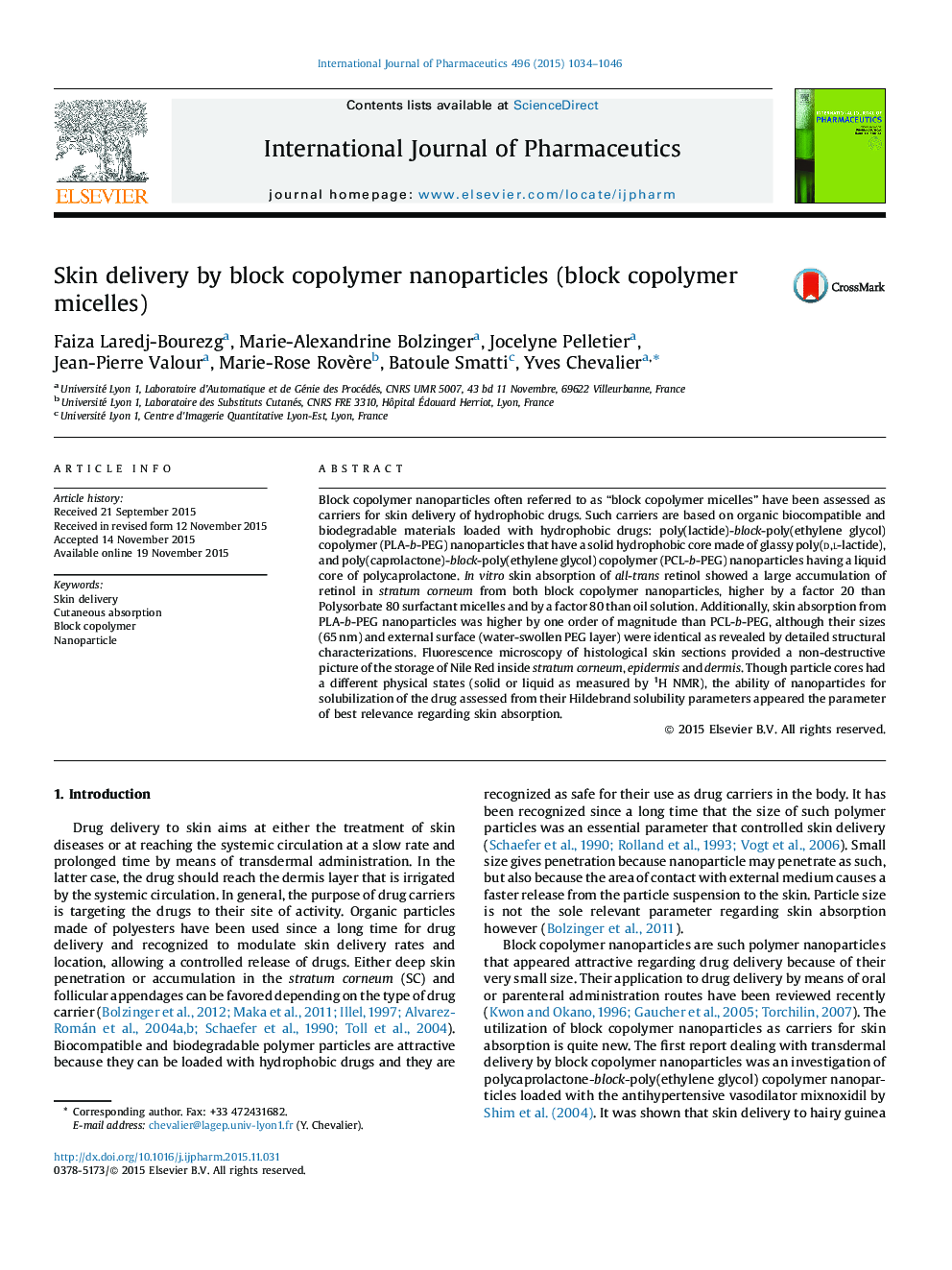| Article ID | Journal | Published Year | Pages | File Type |
|---|---|---|---|---|
| 5818333 | International Journal of Pharmaceutics | 2015 | 13 Pages |
Block copolymer nanoparticles often referred to as “block copolymer micelles” have been assessed as carriers for skin delivery of hydrophobic drugs. Such carriers are based on organic biocompatible and biodegradable materials loaded with hydrophobic drugs: poly(lactide)-block-poly(ethylene glycol) copolymer (PLA-b-PEG) nanoparticles that have a solid hydrophobic core made of glassy poly(d,l-lactide), and poly(caprolactone)-block-poly(ethylene glycol) copolymer (PCL-b-PEG) nanoparticles having a liquid core of polycaprolactone. In vitro skin absorption of all-trans retinol showed a large accumulation of retinol in stratum corneum from both block copolymer nanoparticles, higher by a factor 20 than Polysorbate 80 surfactant micelles and by a factor 80 than oil solution. Additionally, skin absorption from PLA-b-PEG nanoparticles was higher by one order of magnitude than PCL-b-PEG, although their sizes (65Â nm) and external surface (water-swollen PEG layer) were identical as revealed by detailed structural characterizations. Fluorescence microscopy of histological skin sections provided a non-destructive picture of the storage of Nile Red inside stratum corneum, epidermis and dermis. Though particle cores had a different physical states (solid or liquid as measured by 1H NMR), the ability of nanoparticles for solubilization of the drug assessed from their Hildebrand solubility parameters appeared the parameter of best relevance regarding skin absorption.
Graphical abstractDownload high-res image (115KB)Download full-size image
